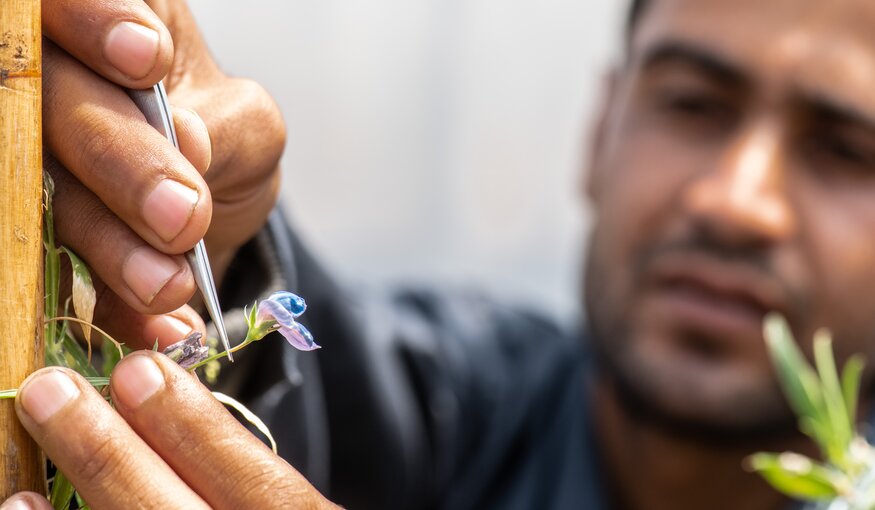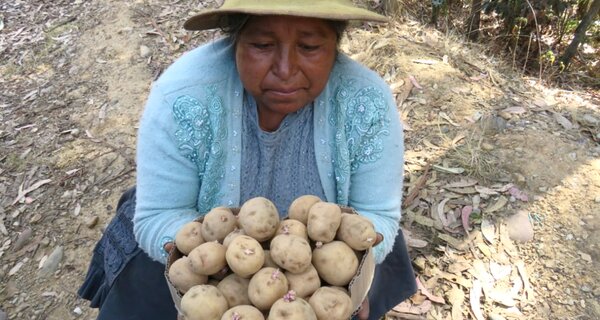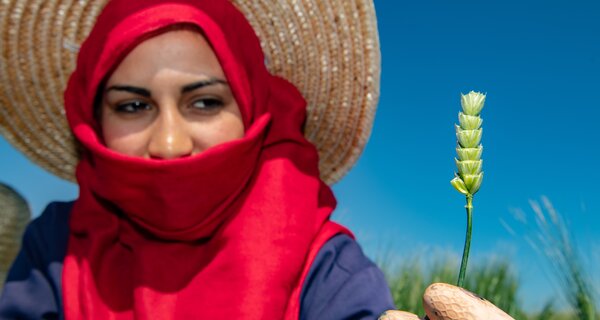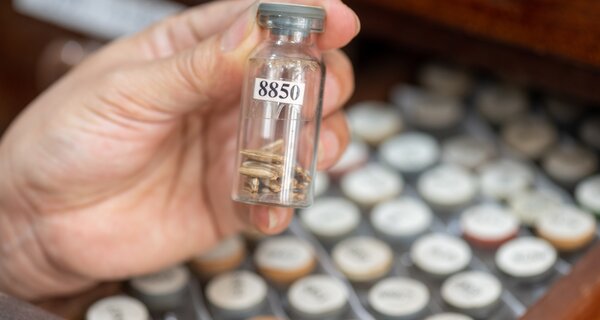Sustainable Food Systems Begin with Resilient Seeds

Jamal Mabrouki, ICARDA technician. Grasspea breeding at ICARDA's facilities at Marchouch Station, Morocco. (Photo: Michael Major/Crop Trust)
21 February 2023
As the global climate crisis continues to wreak havoc on our food systems, there can be no better argument that we need bold and proactive measures to protect agriculture. Rapid changes in temperature and rainfall patterns can have devastating effects on crop yields, and in many regions farmers are already struggling to grow some of their crops.
But there are solutions out there that can help us adapt our agriculture to the new normal. One I particularly like is to toughen up our crops by breeding in traits from their wild relatives. This takes a long time and is risky, so commercial plant breeders are not very keen on it. But sometimes the DNA of the wild relatives is the only place where you can find the diversity the crop needs. Enter pre-breeding. This is the initial process of cross-breeding a crop varieties with their wild and weedy relatives and sorting through the diverse results to identify plants that not only produce a lot but that that can also survive, and even flourish, in harsh and worsening climatic conditions. These preliminary products are then handed on to conventional breeding programs, which use them to take commercial varieties to market.
The recent release of Jabal durum wheat in Morocco is an excellent example of pre-breeding for crop improvement. The new drought-tolerant variety was the culmination of a painstaking process of crossing cultivated durum wheat with one of its wild relatives collected in Syria many years ago. Jabal, which means “mountain” in Arabic, was singled out by farmers in consultations with crop breeders because it seems to do very well under drought conditions, an increasingly common stress in its main cultivation areas.
And on the other side of the world, breeders in Peru developed a new variety of potato, called CIP-Matilde, that combines the characteristics that consumers value with wild potatoes’ ability to cope with diseases and climate extremes.
New varieties such as these do not only help farmers adapt to climate change while producing more nutritious food. They also help mitigate climate change, by reducing the need for inputs –inputs which are costly, pump carbon dioxide into the atmosphere, and are bad for the environment in other ways too.
Pre-breeding is not without its challenges: it requires a significant investment of time and resources, as well as a deep understanding of the genetics of the crop. It can take many years before the results of pre-breeding are ready to be included in programs to develop new crop varieties that are ready for commercial production.
But I firmly believe that the benefits of pre-breeding using crop wild relatives make it a vital investment in our food and nutritional security. And I am excited to embark on our latest pre-breeding initiative with our invaluable partners through the new 10-year BOLD Project – Biodiversity for Opportunities, Livelihoods and Development, funded by the Government of Norway and led by the Crop Trust. Continuing the work from the successful Crop Wild Relatives (CWR) Project, the Crop Trust will now work with 36 pre-breeding partners in 20 countries to develop more resilient varieties of seven crops. This includes on-farm trials and other participatory approaches to ensure a more effective flow of novel crop diversity to breeders and farmers to help mitigate the effects of the climate crisis on our future food.
The BOLD pre-breeding efforts for each crop are led by existing pre-breeding and evaluation partnerships from the CWR Project: the International Center for Agricultural Research in the Dry Areas – ICARDA (for barley, durum wheat, grasspea), the South Australian Research and Development Center – SARDI (alfalfa), the Tanzania Agricultural Research Institute – TARI (finger millet), Can Tho University (rice) and the International Potato Center – CIP (potato).
The challenges we face are real and growing, but not insurmountable. With the right investments in science and technology, the right partners, and the wealth of diversity of crops and their wild relatives safeguarded in genebanks, we can build a more resilient future for our food.
Categories: BOLD, Crop Wild Relatives





